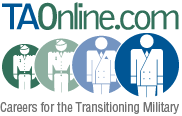Title:5 Resume "Rules" You MUST Ignore
Author:Susan P. Joyce
Date:October 2013
Source:workcoachcafe.com
What works and doesn't work for job search today has changed substantially in the last few years — technology and the economy have changed most of the basic "resume rules."
Unless the employer is pretty small, fewer than 100 employees, the process of posting jobs and collecting resumes is automated. For resume submissions, this is significant.
-
Don't bother including widely-held skills like email, spreadsheets, and word processing expertise.
Wrong! If the words are used in the job description, be sure to include them in the resume you submit for that job. See the next two rules for the reasons.
-
One size fits all.
Not anymore! In the past, we created one version of our resume that was distributed, via snail mail, fax, or hand-delivered. And this physical version of our resume was read by a human being and stored in a file cabinet. Those days are past. Now, resumes are usually stored electronically and read by a human being after appearing in the search results for a keyword search through the resumes or applications.
At a minimum, the top of the resume should be customized to match the job title of the job being sought, like this:
Objective: [employer's job title]
or
Summary: [one or two sentences that summarize why you qualify for the job, like "Administrative professional with 5 years of experience managing the calendar, group meetings and conferences, travel arrangements, and staff communications for the VP of Whatever" assuming that the applicant actually has that experience and is applying for a job which requires it.]Better:
To be found in a resume database or applicant tracking system, resumes must be customized to the opportunity because the words in the job description are most likely the words the searcher will use to pull resumes out of the database.So, make sure that in addition to the summary or objective described above, you pay close attention to the words you use in your application or resume:
- If the job requires someone who has "managed" a group of workers, don't use the term "supervised".
- If the job requires someone who has "expertise with Microsoft Office", don't describe it as "expertise with Microsoft products".
- If the job requires someone with "experience managing social media", don't describe it as "experience managing a LinkedIn Group".
- If the job requires someone with a "PMP Certification", don't describe yourself as "a Certified Project Management Professional".
NEVER be untruthful! But match the words in the requirements as closely as possible. The language you use should match the description as closely as possible.
More on this next.
-
Be consistent in your use of language.
Nope! The person who does the searches may or may not use exactly the same terms as the person who wrote the job description. And, reality is that the person who wrote the job description may or may not have created an accurate description.
So, this is time for you to be inconsistent in your use of language.
Cover the exact terms in the description, like the examples in number 2 above, but then you include alternate versions. For example:
- If the job requires someone who has "expertise with Microsoft Office" describe it as "expertise with Microsoft Office (Microsoft Word, Microsoft Excel, Microsoft PowerPoint, and Outlook, both 2007 and 2010 versions)".
- If the job requires someone with "experience managing social media", describe it as "experience managing social media (including LinkedIn Groups with more than 5,000 members)".
- If the job requires someone holding the "PMP Certification" describe yourself as holding the "PMP (Project Management Professional) Certification".
Now, you have covered the exact terminology used in the job description and added important keywords that are alternatives to the words used in the job description. Continue being inconsistent with keywords, including multiple versions of important terms like abbreviations and acronyms with the words or phrases they represent:
- "BofA" and "Bank of America"
- "NM" and "New Mexico"
- "WP and "WordPress"
- "Admin Assistant" and "Administrative Assistant"
- "CPA" and "Certified Public Accountant"
-
Use a functional resume (rather than chronological) to highlight your skills, particularly if your work history is a little spotty.
NO! Every recruiter I've ever asked this question has told me that a functional resume, one which is completely focused on the job seeker's skills, sends up red flags, and they automatically ignore that applicant. Resume expert Susan Ireland has long recommended using only a chronological resume or a "combination resume", basically a chronological resume with a section near the top highlighting skills, particularly useful when you are changing industries.
-
Underlining, borders, and other graphic elements make a resume stand out.
These may add emphasis, but they may also confuse the software that "digests" the resume, and, in the age of hyperlinking, underlining often confuses people. What is intended as emphasis becomes confusion when the "link" doesn't work, as above.

